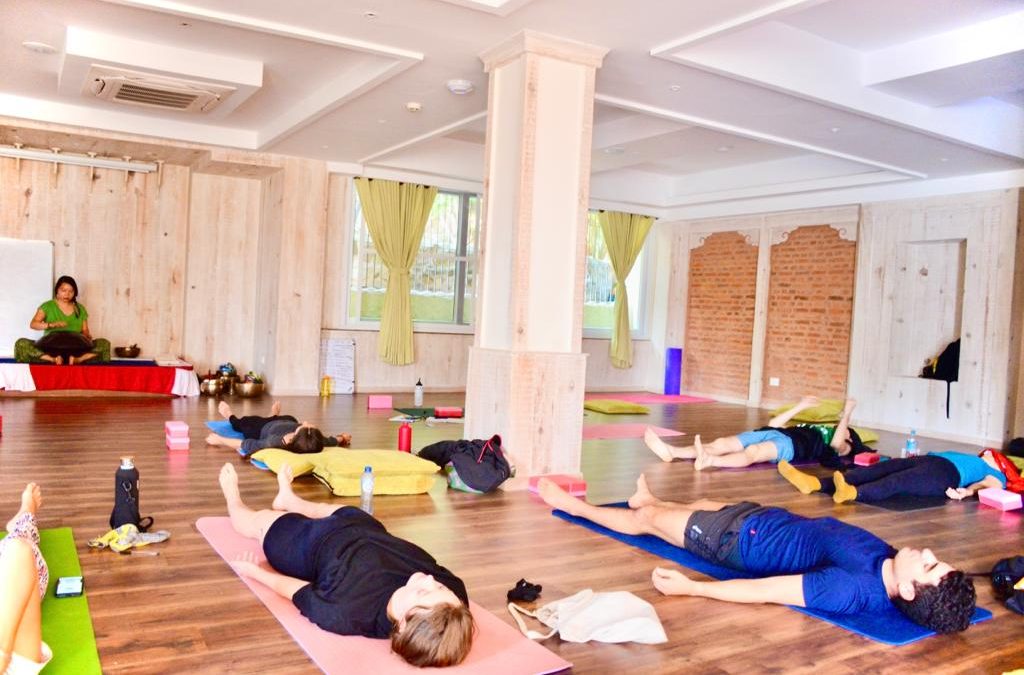What is kundalini Practice and How to Channelize the energy through practice of Kundalini?
Most of us, whether consciously or subconsciously, act more in response to our surroundings than we do with any kind of deliberate planning, and this applies to both our thoughts and actions. It’s not uncommon for us to go about our daily lives—driving to work, washing dishes, tucking the kids in, or eating—without fully appreciating what’s going on or what we’d like to happen.
Overview of Kundalini Practice:
The Kundalini Practice can help you achieve a heightened state of awareness that can serve as a springboard for a more mindful approach to daily life. Kundalini meditation, which channels primordial energy, is one type of practice that has the potential to be immensely beneficial.
You can release stress and the tendency to go through life on “autopilot” by Kundalini Practice. Yoga Asanas, Pranayama, Kriya Yoga, Mantra, and even Ayurvedic herbs and Potions can all be used to awaken Kundalini. The questers also have a choice in the form of Ras Vigyan.
Mantra sadhana is a risk-free method, so everyone ought to give it a shot. When Kundalini Practice is awakened, a tremendous amount of energy is released into the body, and this energy must be carefully directed through the various organs and systems to prevent any harm.
Slow and risk-free, the mantra sadhana is the way to go. Kundalini Practice is safest when done under the watchful eye of a seasoned yogi or teacher. This technique involves opening the chakras one by one, and there is a total of six. There are seven steps outlined in the document.
Kundalini Practice, which ushers in the body’s innate divinity, requires the guidance of a teacher. Jealousy, greed, anger, ego, egotism, infatuation, and other human weaknesses can all be overcome through this method.
This internal battle between a person’s positive and negative traits can become so intense that it can cause a mental disturbance. That could lead him down a dangerous road that he should avoid at all costs.
A yogi with years of practice under their belt would know better than to let any harm come to their body. Using the mantra, we can wipe out every bad thing in the universe. There are a variety of mantras used to stimulate all seven chakras. An individual’s sadhana alone is not enough to bring about enlightenment.
It won’t happen overnight, but it will happen gradually and steadily. It is not instantaneous to Kundalini Practice. Once the sadhana is completed, and the practitioner experiences a state of mental clarity, activation may take place. To awaken Kundalini, a person must be completely unburdened by any and all negativity and be prepared to practice patience.
For an infinite amount of time, people have been using Kundalini Mantras to awaken the kundalini energy. Kundalini Practice can be awoken through the use of mental meditations, pranayama, and strenuous physical exercise. Mantras are vibrations of sound used to awaken the body’s innate divine energy.
“Guru Mantra” refers to the special “Mantra” that a Guru (spiritual master) imparts to his “Shishya” (disciple). The disciple chants the mantra on a regular basis while maintaining focus, meditation, and complete devotion, adhering to certain guidelines set forth by his master.
The Kundalini Practice is awakened in the disciple through this method. The positive effects of mantra chanting on the brain, spine, and body are a result of the sound vibrations produced by the chanting. With consistent effort, a divine presence eventually manifests.
Since each mantra has a slightly different effect on the human body, the Guru is the one who should choose and impart the mantra to the disciple. This method of Kundalini Practice is the simplest but also the slowest. Mantras can be practiced by anyone; all you need to do is sit quietly, focus your mind, and repeat the Guru’s words.
Purpose of Kundalini Meditation
 Kundalini Practice includes a meditation practice called kundalini samadhi, the goal of which is to increase the circulation of life force. It’s predicated on the idea that the energy stored at the base of the spine (the root chakra) must be channeled up through the other six chakras and out the crown chakra at the top of the head.
Kundalini Practice includes a meditation practice called kundalini samadhi, the goal of which is to increase the circulation of life force. It’s predicated on the idea that the energy stored at the base of the spine (the root chakra) must be channeled up through the other six chakras and out the crown chakra at the top of the head.
The goal of Kundalini Practice method of energy release is to open up channels of communication between your brain and your body, allowing you to heal on multiple levels (mental, physical, and spiritual). This method of centering yourself on your breath is meant to help you be in the here-and-now, create a new pace, and have meaningful conversations with your best self.
Possible Benefits
At Nepal Yoga home, Learning Kundalini Practice can improve your quality of life by helping you focus your attention and energy. In particular, this can be observed in the following ways:
- Focusing on the task at hand and keeping distracting thoughts at bay
- Interrupting your typical routines and forcing you to become more self-aware
- Harmonizing mental, physical, and spiritual health
- Gaining the motivation and inspiration to get things done in your life
- Body-awareness training
- Improving thought processes and sanity
- Aiding in the alleviation of stress and worry
- Aiding in relaxation and inner calm
- Enhancing mental health and performance
- Increasing quality of sleep and addressing other sleep-related concerns
- Teaching diaphragmatic breathing and increasing lung capacity
How does the Practice Works?
Here are the first baby steps you should take in your Kundalini Practice journey. Keep in mind that baby steps are better than no steps at all. Choose an amount of time you can devote to meditation that you feel confident you can keep up with every day. Don’t try to do too much too soon, or you might end up feeling overwhelmed and giving up. Don’t discount the benefits of even the shortest daily session of Kundalini meditation.
Conclusion:
Remember that it’s okay to take baby steps if you’re interested in learning Kundalini Practice and that incorporating meditation into your daily life can be challenging. If you’ve never meditated before, even trying for two minutes at a time could be challenging. But keep going for it. It takes practice to quiet your mind, but even a few minutes of doing so can have a significant effect.

